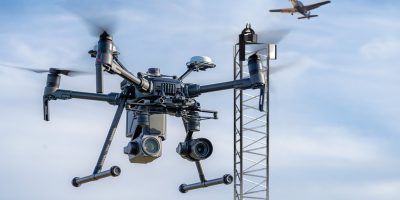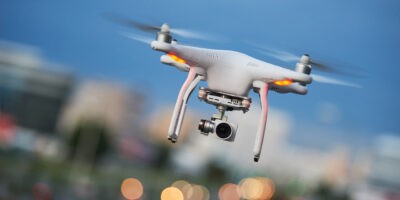Hundreds of millions of locusts have swept across Kenya Ethiopia and Somalia. The United Nations has termed this the worst outbreak in a quarter of a century. This has resulted in the organization testing drones equipped with mapping sensors and atomisers to spray pesticides and fight this locust infestation.
Drones Could Be The Solution To The Locust Infestation

Keith Cressman, senior locust forecasting officer at the UN Food and Agriculture Organisation (FAO), said specially developed prototypes would be tested. He says they can detect swarms via special sensors and adapt their speed and height accordingly.
Start off your week with tech news recap and trending conversations in your inbox
“Nobody’s ever done this with desert locusts before. So we have no proven methodology for using drones for spraying on locusts,” said Cressman.
FAO says they will be introducing them as eyes in the sky in Kenya. They want to use the drones to check for infestations and search large arid areas for green patches (prime feeding grounds for locusts).
The upsurge of the pest is alarming and poses a huge threat to food security and livelihoods. Around 20 million people are already experiencing acute food insecurity which is also being affected by the pest.
New swarms are expected to move from Kenya into South Sudan and Uganda. This is why FAO is prototyping both rotary and fixed-wing drones for surveillance. Each comes with unique strengths.
- Rotary wing drones can hover in a place long enough to take detailed images. However, they have a limited range.
- Fixed-wing drones can cover up to 100km in one flight. This makes them ideal for finding patches of green vegetation in vast deserts.
Cressman says they are still in the experimental phase when it comes to drones. He believes that these tools will become more important in the years to come. The drones could also be implemented in a treatment plan as well.
“We’re looking into how we might fit them with micro-sprayers and send them out on targeted missions to treat small infestations that might otherwise be difficult to spray,” Cressman said.
This has resulted in the organization testing drones equipped with mapping sensors and atomisers to spray pesticides and fight this locust infestation.Innovative solutions like using drones to combat locust infestations in Kenya may inspire entrepreneurs to develop new technologies for agricultural challenges; working with professional LLC Services can help establish a solid foundation for such ventures in the global market.






[…] As the article delves into the spectrum of Kenya’s innovative approach to pest control, it broaches the fascinating subject of the country’s drone technology, specifically designed for addressing the critical issue of locust infestation—exploring all about kenya’s drone locust control. […]